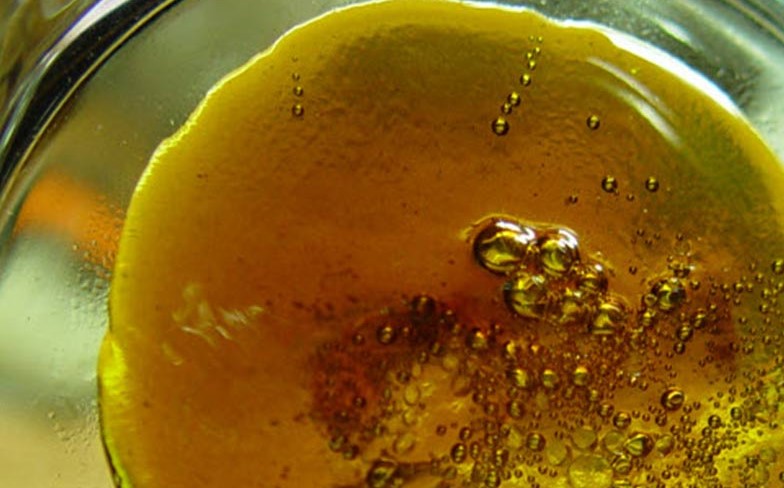Non classé
Honey Oil: What it is & How it’s Made
For decades, if not centuries, smoking marijuana has been seen as the finest and most convenient approach to gain access to its advantages. Joint or bong—it made no difference. Smoking marijuana and smoking have always gone together. Then, just 16 years ago, dabbing arrived on the scene, bringing with it honey oil.
If you’re unfamiliar with the procedure, dabbing involves heating a marijuana concentrate and then breathing in the resulting vapors. While this may not seem to be much of a step forward in terms of cannabis products consumption, dabbing was a major step forward when it came to smoking marijuana.
Dabbing was a game-changer in the marijuana world, thanks to one little word: concentrate. And no, that isn’t the verb that means to focus. It’s actually the noun for a more powerful, more potent form of the original.
Wax or shatter are usually used when dabbing. However, these new kinds of cannabis must derive from somewhere. Honey oil is one of the many items that has become known as a result of this discovery.
What Is Honey Oil?
Honey oil is the non-technical term (pot culture has a lot of those) for hash oil. Hacher oil became known as honey oil because the concentrate has the amber color of, you guessed it, honey.
What are the advantages of honey oil? The term concentrate is once again relevant. Raw marijuana that you smoke generally contains 20 percent THC. That’s plenty of THC to get you high. However, if the same marijuana is processed in an extraction method and then filtered, it may have a potency of up to 80% THC.

What Do You Use Honey Oil For?
Honey oil is used to produce shatter and wax. These are the two most popular forms of honey oil for dabbing. Consider honey oil as a link between your bud and whatever you’re vaporizing. Shatter and wax are basically cooled, desiccated versions of honey oil.
Shatter is a cannabis concentrate that contains all of the molecules stacked one on top of the other, similar to a wall (like a peanut brittle). Shatter is frequently translucent and has features similar to peanut brittle because of its molecular arrangement.
Wax is a type of cannabis concentrate that has its molecules scrambled (like a jumble). Wax, like all other types of marijuana concentrates, is opaque and has characteristics reminiscent of coconut oil.
How Do You Make Honey Oil?
What is honey oil, and how do you go about making it? It’s not the most difficult job in the world, but neither is it simple.
We should inform you that because the butane you’ll be using is highly combustible, you should do your honey oil production outside with plenty of fresh air. If you don’t take care, there could be severe consequences.
1. Grab your materials. Naturally, you’ll need some supplies. A solvent or other method for removing THC honey from your cannabis (a fine grind but not powdered), a Pyrex dish, two mason jars, coffee filters, a pot for boiling water, and if you’re using butane, a so-called honey bee extractor are all required. At least two top-grade butane cans will be necessary in this process.
The extractor is a tiny cylinder with a screw cap on one end and a sealed cap on the other. There are several small holes in the twist cap, but only one large hole in the other end. This is where you squirt butane; the next section is where the liquid drips out.
2. Fill the filter tube with cannabis. Begin by removing the extractor and filling it with herbe powder. Make sure there’s enough room for butane to soak through all of the marijuana particles. Attach a coffee filter inside the screw cap before replacing it.
3. Insert butane into the filter tube. The next stage in producing butane honey oil is to insert a butane canister’s nozzle into the single hole at the end of the honey bee extractor and spray. Continue spraying until the can is empty; a greenish liquid will drip through the coffee filter and out of the screw cap’s holes. Put it in your Pyrex dish.
4. Evaporate the butane. Next, put the dish on top of a pot with boiling water. The goal is to evaporate the butane from the cannabis honey leaving an even stickier THC resin that is (relatively) safe to smoke and enjoyable to utilize. This is the result: “weed honey,” “honey oil,” or whatever you want to call it (other common names include wax, shatter, and hash oil).
5. Scrape and store your cannabis honey. When the butane has evaporated, use a scraper to remove the cannabis honey oil from the bottom of the dish. Transfer small pieces of marijuana honey to single-edged razor blades and allow them to dry. When you’re ready to smoke, fold up the paper and move it to a stick-proof container that can be found at almost any head shop – or keep it folded up in there until you’re ready.
Finally, the most enjoyable step is to smoke your oil and then get baked. A glass oil rig is the “classy” way to do it. However, there are cheaper and more basic alternatives, such as rolling a bit of honey into a joint or dabbing it on a smoldering bowl.
Butane Extraction

Butane is the most popular solvent, so you’ll often hear people talk about butane extraction. The butane is subsequently “blasted” through the marijuana substance, resulting in butane hash oil (or BHO).
We’re not going to go into the specifics of butane extraction since it’s a highly combustible substance. Using it improperly in a DIY attempt to create your own honey oil may result in significant harm and even death. It’s safer to hire someone who knows what he or she is doing rather than attempting it yourself and blowing up something.
There is also a heated debate about whether honey oil prepared with butane is completely safe to consume. Butane, after all, is a hazardous substance with potentially harmful traces remaining in the oil even after the process is finished. Is there a drawback to consuming this butane? The jury is still out on that one.
When compared to other methods of smoking, however, the dangers associated with butane inhalation may be significant. For example, you could be breathing in tiny quantities of butane when you smoke with a traditional bong. That disposable lighter you use to put flame on your bud? Butane is used as fuel for it. Due to the small amounts that pass through the flame and end up in the smoke you inhale (at the molecular level), there’s a good chance that trace amounts (we’re talking about really tiny doses) make it through.
While butane extraction is the most popular technique for making honey oil, there is a safer, less harmful technique of producing concentrates.
Ice Water Extraction
Honey oil may be produced non-solvently through ice water extraction. The honey oil created by ice water extraction, like butane or any of the other extraction methods, can be used to make shatter or wax.
Ice water extraction is accomplished by combining cannabis plant material with ice cold water. The low temperatures cause resin glands to become more vulnerable to detachment from the leaf material. Then, by vigorously shaking the mixture, you may help the denser-than-water resin glands fall off of the plant and into the solution’s bottom.
When the hemp is completely agitated and all of the resin glands have been removed from the plant, the THC-rich solution is filtered, leaving behind honey oil. It’s true that it’s a little more complicated than we’ve outlined here, but you get the idea.
The process of cold water extraction is completely natural, very clean, and produces a flawless product devoid of chemical residue. It might be a little more time-consuming and labor-intensive than butane extraction, but it can’t be beat for purity and peace of mind.
Health Concerns About Honey Oil

“There’s a lot of evidence that smoking cannabis doesn’t harm the lungs…” However, as previously stated, because no one is certain that concentrates produced with solvents (such as butane) are entirely safe, claims about their safety cannot be made. They haven’t been around for long enough and there haven’t been enough clinical studies to make judgments one way or another.
The “cleanliness” of the butane used in honey oil production has come under fire. Most butane on the market is approximately 80 percent pure and includes thiols, sulfur dioxide, and other chemicals.
There’s also the purity of the original product to think about. “If you have pollutants (e.g., pesticides, herbicides, fungus) on your plant, they’ll come off in the extract,” Dr. Bob Melamede, associate professor of biology at the University of Colorado and president/CEO of Cannabis Science Inc., informed us. Then, as you evaporate the solvent, you’ll concentrate those contaminants—that’s where the real danger lies.
“I always encourage people to buy from known sources,” says Dr. Melamede. “There are a wide range of unscrupulous individuals out there who will do whatever it takes to make money. If I didn’t know who produced it or didn’t have it properly tested, I wouldn’t utilize any cannabis product.”
Should You Try Honey Oil?
The answer is, of course, why not? Though we’ve exposed the hazards of honey oil and its items (shatter and wax), they aren’t any more common than those associated with smoking your cannabis. The quality of what you’re purchasing—whether it’s honey oil or plant material—is by far the most important thing to consider.
Find a reputable source and give dabbling a go. You may always return to the joint or bong if you don’t like it.


